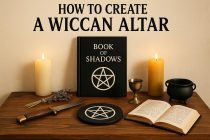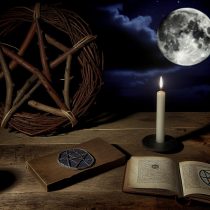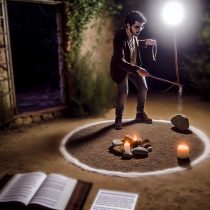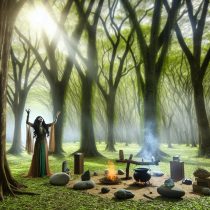Understanding the Basics of a Wiccan Altar
A Wiccan altar serves as a sacred space for ritual work, meditation, and honoring deities and natural forces. Typically, a Wiccan altar incorporates elements representing the four classical elements: earth, water, air, and fire. While there are no rigid rules for setting up an altar, guiding principles can help ensure it aligns with personal spiritual practices.
Choosing a Location
When selecting a location for your Wiccan altar, it can significantly impact your practice. It should be a spot where you can comfortably perform rituals without interruptions. Some practitioners prefer an altar in a private corner, allowing for undisturbed reflection and ceremony. In contrast, others might opt for a more central location within a shared living area. Ensuring that this space remains respectful and dedicated to its sacred purpose is essential. Choosing an outdoor location can also be a meaningful choice, especially for those who wish to connect more directly with the natural world and its energies.
Selecting an Altar Surface
Once a location is chosen, the next step is identifying a suitable surface for your altar. This might be a table, a shelf, or even a section on the floor. The size and aesthetic of the altar should resonate with your intention, space constraints, and personal taste. These settings can vary greatly, depending on individual requirements and the available space. Whether it is a small and simple arrangement or an elaborate setup, the altar’s surface is a key component that frames your sacred space.
Essential Components
While every altar is unique, several common components are typically included to align with Wiccan traditions:
Deity Representation: Statues, images, or symbols of the God and Goddess or any other deities you may choose to honor are often a central part of the altar. These representations can help focus your intentions and symbolize the divine presence in your rituals.
Elemental Symbols: Incorporating symbols of the four elements is a foundational practice in Wiccan altars:
– Earth: Crystals or stones can be used to represent earth, grounding the altar and connecting it with stability and fertility.
– Water: A bowl or chalice filled with water symbolizes the flow of emotions and the cleansing properties associated with this element.
– Air: Incense or feathers embody the qualities of air, bringing in the elements of communication and intellect.
– Fire: Candles are used not only for the element of fire but also to transform and illuminate the spiritual path.
Tools: Ritual tools such as an athame (a ceremonial blade), wand, or pentacle can be included on the altar, chosen based on tradition or personal preference. Each tool has its purpose and symbolism, complementing the individual’s practice.
Other Elements: Other items like a chalice, used for libations or offerings, and an offering bowl, a place for herbs, flowers, or other offerings, can enhance the altar’s spiritual efficacy.
Arranging the Altar
The arrangement of these items can be traditional or entirely personal, giving shape to the altar’s aesthetics and energy flow. Traditional setups often suggest placing symbols for fire and air on the right side of the altar, representing the active or masculine aspect, while placing water and earth symbols on the left, representing the passive or feminine. However, flexibility allows practitioners to adapt arrangements to suit their spiritual needs and intuitive guidance.
Personal Touches
Infusing personal elements into the altar heightens the connection to one’s spiritual journey. Personal touches might include family heirlooms, mementos from past rituals, or items that hold significant meaning. This process of personalization is an opportunity to express unique spiritual ideas and connections within the context of your practice. By integrating these elements, the altar becomes a deeply meaningful space, reflecting both your spiritual aspirations and your life experiences.
Maintaining the Altar
Regular upkeep of the altar is crucial to maintaining its energy and purpose. This includes dusting, changing water, and periodically altering arrangements to keep the space fresh and energized. Such practices extend beyond mere cleanliness; they enhance your connection with the sacred space and ensure your altar remains a lively focal point for your spiritual endeavors and rituals.
Incorporating additional resources to explore altars further can be very beneficial. Websites offering detailed guides on altar arrangements and specific pantheon focus provide deeper insights into the diverse practices within Wicca. A resource such as “Learn Religions” offers various articles tailored for different levels of practice and tradition, offering a wealth of information to support your evolving spiritual journey.
In conclusion, maintaining and evolving your altar is an intimate journey, interwoven with spiritual development and personal reflection. Each choice you make, from the location to the elements you select, contributes to the sacredness of your altar and ultimately to the expression of your Wiccan path. By following these guidelines and infusing your altar with personal elements, you lay the foundation for a fulfilling and resonant Wiccan practice.










